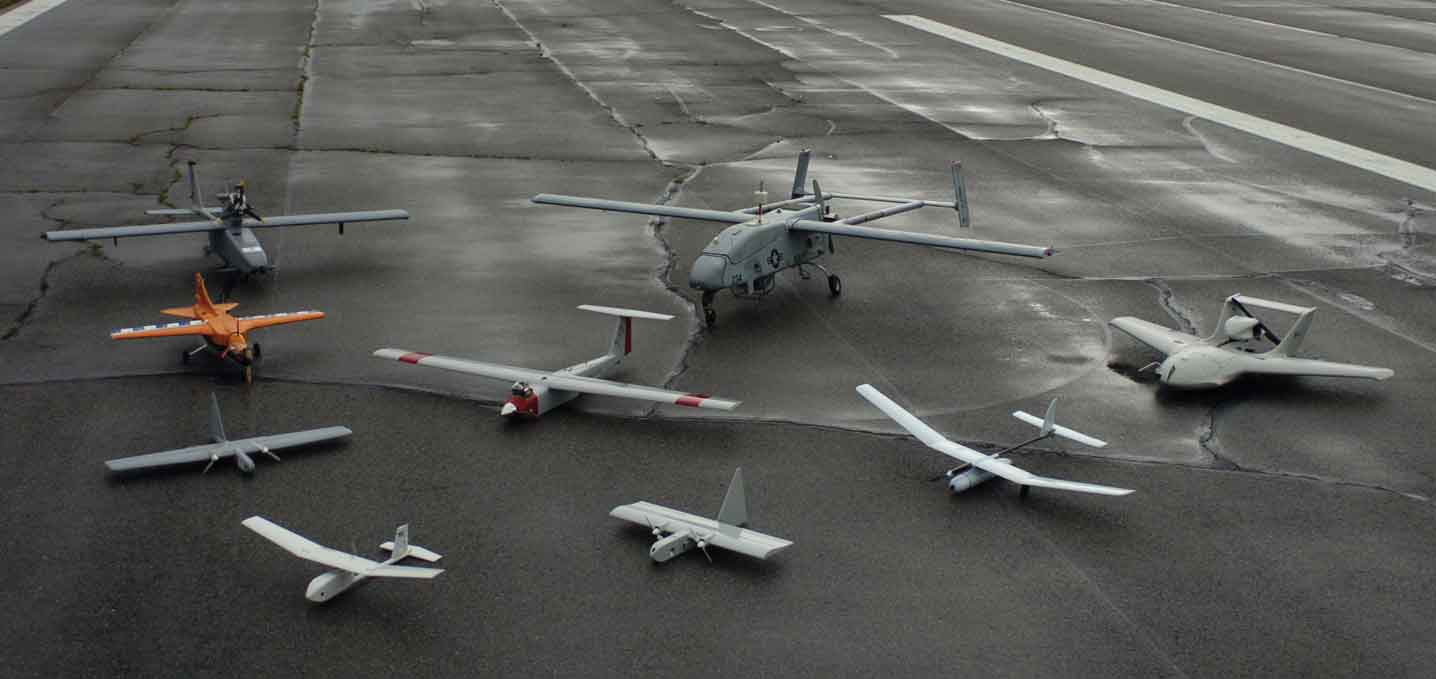
Various Unmanned Aerial Vehicles. Pictured are (front to back, left to right) RQ-11A Raven, Evolution, Dragon Eye, NASA FLIC, Arcturus T-15, Skylark, Tern, RQ-2B Pioneer, and Neptune.
The use of Unmanned Aerial Vehicles (UAVs) is not new and dates back to World War II, when the Germans used a remotely controlled 2300-lb flying bomb steered by a pilot from a mother ship. Since then, UAVs have come a long way and today, a pilot or operator on the ground is able to observe and target a moving vehicle in Pakistan from the other side of the world. The technology has matured and UAVs are proliferating both in number and application.
After World War II, there was little development in UAV technology and most remotely piloted vehicles were used as manoeuvring targets for training pilots in air combat. The Vietnam War saw the USAF use the Firefly, a small long-range experimental drone for reconnaissance missions but subsequent development was deemed as not ‘cost effective’ and scrapped. Development of UAVs received an impetus when the Israeli Air Force employed the Pioneer drone during the war in Lebanon in 1982.
Development of UAVs received an impetus when the Israeli Air Force employed the Pioneer drone in Lebanon in 1982…
The US version of the Pioneer was pushed into action during Operation Desert Storm in February 1990, when helicopters onboard the US Navy battleship, USS Wisconsin, used as airborne spotters for directing gunfire, were replaced by the Pioneer UAV. In one instance, while USS Wisconsin was engaging ground targets on Faybala Island off Kuwait, the pilot of the drone was instructed to fly low over the Iraqi trench line so that the soldiers would know that they were being targeted. The troops heard the distinctive buzz of the Pioneer UAV and realising that they would come under fire, waved white flags to surrender. In this widely publicised incident, this group of Iraqi Republican Guards became the first humans to surrender to a drone.
The UAV Vs Manned Aircraft
The development of Unmanned Aerial Vehicles (UAVs) offers the hope that countries can wage war in the future in a more efficient and less risky manner than when aircraft are piloted by men and women. Many air forces operate UAVs but a mere handful of them have used them in actual combat conditions. It was envisaged that UAVs would enhance the ability to project military power and could be used to perform roles and missions which pose a high threat to manned aircraft such as operating in a Nuclear, Biological and Chemical (NBC) warfare environment, reconnaissance missions over enemy territory or while tasked to carry out Suppression of Enemy Air Defences (SEAD).
Removing the human from the cockpit frees the machine from the requirements of making systems for heating/cooling of the cockpit, pressurisation, ejection devices and oxygen systems for the pilot. It expands the flight envelope in terms of manoeuvreability, altitude and duration for which the aircraft could be airborne. It was claimed that UAVs would be less expensive to develop and manufacture than manned aircraft. They would reduce the requirement for supporting facilities and manpower that modern aircraft require. The jury is still out on whether the UAV has lived up to these expectations.
Many air forces operate UAVs but a mere handful of them have used them in actual combat conditions…
One definition of a UAV states, “It is a powered aerial vehicle that does not carry a human operator, uses aerodynamic forces to provide vehicle lift, can fly autonomously or be piloted remotely, can be expendable or recoverable, can carry lethal or non-lethal payload”. The critical factor that differentiates a manned aircraft from a UAV is the amount of information available to the UAV operator. The most significant advantage of piloted aircraft is the ability of humans to take inputs from inside and outside the cockpit and build a composite picture for better situational awareness. A pilot can make assessments based on incomplete or ambiguous inputs and still take critical decisions of selection of weapons and use of lethal force. Artificial intelligence is yet to reach the level of sophistication to abrogate such autonomy to the UAV.
Modern technology provides considerable amount of information to the UAV operator through data and visual displays but these technologies are still inadequate to give the human operator the visual stimuli derived from the attitude of the plane and the physical sensations of vibration, sound, ‘g’ forces and all-around visibility that are so essential for piloting a plane and to take instantaneous decisions in the cockpit. These inputs can be provided to the UAV operator to improve operational potential but will directly increase the complexity and cost of the UAV.
Employment of UAVs
Presently, military unmanned systems are either remotely controlled or semi-autonomous systems which have a high degree of autonomy yet remain supervised. The next generation of UAVs is likely to demonstrate a much higher degree of autonomy and will incorporate the ability for cooperative action as a team with manned aircraft or other UAVs. They will also be able to operate as a swarm with a number of other UAVs. If UAVs are to be made completely autonomous in the future and only the final weapon launch is to be controlled by the operator, the price of automation will significantly increase the costs to a point that they become more expensive than the less automated UAVs controlled by humans.
Till 2001, UAVs were used primarily for reconnaissance, surveillance, intelligence gathering and as decoys. In February 2001, the first Hellfire missile was test-fired from a Predator UAV and this had a profound impact on the operational use of UAVs. The terrorist attacks of September 11, 2001, created a demand for Hellfire-equipped Predator UAVs to target terrorists in Afghanistan, Yemen and Pakistan. In the very first year of combat operations, the US forces hit 115 targets in Afghanistan and the CIA employed the Predator to eliminate known Al Qaeda terrorists. The Predator was also used to engage Iraqi mobile radar sites in preparation for the invasion of Iraq in 2003.
The most significant advantage of piloted aircraft is the ability of humans to take inputs from inside and outside the cockpit…
UAVs in operation today range from hand-held systems to those as large as a manned bomber. Remotely operated helicopters ranging from the size of a mini-UAV to that of utility helicopter are now available. The performance of these UAVs is varied and provides different operational capabilities such as surveillance, reconnaissance and intelligence gathering. Therefore, sensors used on UAVs must balance the need for high resolution or sensitivity with the smallest size. The performance of the UAV depends on the combination of operating altitude and resolution provided by its sensors. Higher the altitude, larger the sensor required and higher the resolution and sensitivity of requirements.
Initially, the US and NATO forces categorised the use of armed UAVs as under:
- For direct support of military operations as a weapon and also as a surveillance tool for locating, identifying and engaging targets.
- For counter-insurgency operations in a non-military environment for surveillance and attack.
On the other hand, the CIA uses the UAV in hunter-killer missions where it maintains a constant vigil and strikes at the opportune moment. The major difference being that the US military uses UAVs only in designated combat zones whereas the CIA operates in civilian areas hunting and killing Al Qaeda operatives marked for elimination. The use of UAVs has been an integral part of military operations in Afghanistan and has not been plagued to the same extent by the adverse publicity caused by collateral damage to civilian targets in Pakistan and Yemen.
The critical factor that differentiates a manned aircraft from a UAV is the amount of information available to the UAV operator…
The combat roles assigned to UAVs can be linked to the difficulty of the mission to be accomplished. Attacks against fixed ground targets pose the least challenge. However, the degree of difficulty increases if the target is moving on the ground or is airborne. Attacks on the enemy’s fixed and mobile ground targets are easier if they are not in contact with own ground forces and the use of UAVs to attack targets in contact with own troops increases the complexity. In conventional military operations, troops, vehicles and aircraft of the enemy or of own forces, move around in the same geographical area and identifying friend from foe is always a challenge. Providing this mass of data to an operator console at a distant location is the ultimate objective but it has not yet reached the necessary degree of reliability to preclude accidental fratricide.
In early November 2012, data released by the United States Air Force (USAF) indicates increasing trend in operational missions in Afghanistan under the Obama administration. In 2012, the USAF has carried out more than one strike mission per day in Afghanistan. There, it is interesting to note that the number of manned flights in which weapons were dropped, reduced from 165 a month in 2011 to 139 in 2012. US military forces are reported to have undertaken over one million UAV missions since their induction into service. In 2012, the USAF trained more UAV pilots than fighter pilots. The CIA is reported to have conducted about 350 strike missions in Pakistan and roughly 50 strike missions in Yemen over an eight-year period. The USAF is likely to exceed that figure in 2012 in Afghanistan alone. These figures only highlight the relevance of UAVs in modern warfare and drive home the point that they are here to stay.
An analysis of UAV missions shows that they are used primarily for surveillance and intelligence gathering but can be easily configured for attack missions. The major advantage of UAVs is their ability to maintain station over an objective for long duration and respond to an emerging requirement with minimal delays. UAVs can be extremely useful in electronic warfare especially when acting as airborne communications relays and when gathering signal intelligence. They may also be able to function as airborne jammers and electronic decoys. Insurgent elements use not only mobile and satellite phones for communication but also sophisticated military phones. Intercepting their communications and locating them is essential.
In 2012, the USAF trained more UAV pilots than fighter pilots…
Unmanned systems have the potential to perform a number of other missions normally associated with manned aircraft such as search and rescue, bomb detection, battle damage, reconnaissance for nuclear, biological or chemical weapons, support of special operations and psychological warfare. However, Air Forces of the world will not give up manned aircraft and will only consider those missions where UAVs offer a viable alternative to manned flights. Small, hand-held or vehicle-launched UAVs with low flying endurance controlled by line-of-sight communications have very limited application in air warfare.
However, the Air Force could use the small and micro UAVs for protection and defence of air bases. In addition to combat and combat support missions, UAVs have a role in non-military tasks of internal security, counter-insurgency, coastal surveillance, monitoring of EEZs, homeland security and commercial ventures. However, the clear demarcation of military operations and security related activities is slowly getting blurred as many such operations are launched jointly by the military and security forces in support of national objectives.
The Indian government has deployed UAVs in Naxalite-infested areas to gather real-time intelligence to preempt or counter their attacks…
The Indian government has deployed UAVs in Naxalite-infested areas to gather real-time intelligence to preempt or counter their attacks. The Home Ministry decided to deploy UAVs after the Dantewada massacre where 76 security personnel were killed. The Indian experience has shown that UAV operations have to be well- coordinated if they are to provide timely intelligence. Forested areas harbouring Maoists provide an impregnable cover from detection by mini and micro UAVs with only electro-optical sensors. In such a situation, infra-red sensors are essential. Medium altitude UAVs such as the Searcher and Heron provide the best results; but the information can be provided to field units only after analysis by a command centre over a secure data-link. Multiple sensors from high flying UAVs generate a mass of data and the intelligence gleaned from this large volume of information has to reach field units in time if it is to be used effectively.
Operational Paradigms
Manufacturers of UAVs tout the technological capabilities and extol the potential of their products to provide combat support for every conceivable situation on the ground. In stand-alone demonstrations, UAVs seem to offer comprehensive solutions to the forces on the field. The success of US and NATO forces and CIA operatives reinforces this perception. An analysis of the UAV operations by the US forces in Iraq, Afghanistan and Kosovo shows that the conditions there were not the same as when conventional forces are likely to be pitted against each other. Some salient observations are:
- During Operation Desert Storm the US and coalition forces had complete domination of the airspace.
- There were minimal physical and electronic threats to UAVs during Desert Storm or thereafter, till the overthrow of the Iraqi regime.
- During the counter-insurgency operations in Iraq and Afghanistan, the enemy did not have the capability to electronically disrupt the flight of UAVs.
- CIA operations in Pakistan are conducted with the tacit approval of the Pakistan Government and are not in any way hampered by the Pakistan Air Force which indeed has the capability to shoot down the UAVs.
Two recent incidents underscore the fact that the impact of UAV operations in a lethal air defence and electronic warfare environment will not be the same as was experienced in the benign enemy air defence environment in Iraq and Afghanistan. On November 01, 2012, two Iranian fighter aircraft intercepted and fired upon a US Predator drone which the Americans claim was flying over international waters in the Persian Gulf. There was, however, no damage to the UAV. On December 04, 2011, an RQ-170 Sentinel drone operated by the CIA was hijacked in Kashmar in North Eastern Iran by an Iranian cyber warfare unit claiming that it was brought down by a combination of jamming of control commands and spoofing the GPS coordinates to the UAV making it believe that it was landing at its home base.
Sustained UAV operations have shown that the flight safety record has been a cause for concern…
Sustained UAV operations have shown that the flight safety record has been a cause for concern particularly on account of accidents while landing. However, extensive crew training can reduce accidents to an acceptable level. UAVs are also at risk when negotiating adverse weather conditions in the air or on the ground.
Communication Issues
The communication infrastructure associated with the command and control of a UAV is the key to successful operations. There is a trade-off between onboard intelligence and the demand for data-link capacity. Greater the dependence on a remote pilot, greater is the amount of data that must transfer between the UAV and the pilot. Reconnaissance systems that relay real time video require high bandwidth capability.
The US operations of UAVs are heavily dependent on satellite communications and it is projected that in the near future, the communication needs of the new generation UAVs is likely to exceed the capabilities of available communication satellites. Communication planners of the Indian Armed Forces and the Department of Telecommunications need to consider the available bandwidth, data-link upgrades, range between the source and receiver, network infrastructure, detectability and security of the system while designing for the future needs of all UAV operators in India.
System reliability is always a cause for concern and redundancy is essential to cater for failures or degradation of the communication system. If the number of missions per day in Afghanistan were to increase from one a day to ten, there would be an exponential surge in the communication requirements. Communication between the operator and the UAV is over RF band or UHF SATCOM and both these are susceptible to jamming, spoofing and denial. Spectrum allocation is another area of concern as different countries allocate different bands for communications. Sale of electro-magnetic spectrum for commercial purposes restricts the availability for military applications. Laser communication is being explored as an alternative but is susceptible to degradation in adverse weather and is limited by line-of-sight.
The communication infrastructure associated with the command and control of a UAV is the key to successful operations…
The Final Word
UAV systems are usually less expensive than manned aircraft and initial concepts projected UAVs as inexpensive and expendable aircraft. Modern generation UAVs, however, cannot be considered expendable as the advanced sensors carried onboard are expensive. Current unmanned systems require as many, if not more, people to fly missions than piloted airplanes do.
For example, even while it is on autopilot, it takes a crew of three to operate a Reaper, one to fly, another to operate the sensor and a third to serve as military intelligence liaison. Another pair must deploy to the forward airfield to guide the UAV, using line-of-sight radio during take-off and landing. Improved automation may reduce manpower requirements in the future.
In recent years, UAVs have played an increasingly significant role in many combat zones. Irregular warfare operations coupled with the need to reduce operational risks and casualties, have made UAVs indispensable for military operations. It is projected that in future, UAVs will be able to make life-and-death combat decisions on their own, will be able to fly in civilian airspace with the ability to ‘sense and avoid’ collision with onboard avoidance systems and be capable of ‘buddy refueling’ to carry out strikes globally.
The Joint Strike Fighter will be the last manned jet fighter the USAF will purchase…
However, for the foreseeable future UAVs need human oversight and will not have complete autonomy. In combat zones, the use of UAVs boosts the morale of combatants and has a psychological effect on the enemy. But the world community is raising questions about the ethics of using robots to fight humans.
Unmanned systems provide a number of advantages to the military and it has even been suggested that the Joint Strike Fighter will be the last manned jet fighter the USAF will purchase. However, the idea of unmanned airplanes also runs counter to the aircrew-centric ethos that has defined Air Forces and hence is unlikely that UAVs will ever replace manned aircraft over the full spectrum of air operations in the foreseeable future.
References
- Policy Options for Unmanned Aircraft Systems. US Congressional Budget Office.
- The Ethics and Legal Implications of Military Unmanned Vehicles. RUSI Occasional Paper by Elizabeth Quintana.
- Air War College Occasional Paper 16 by Lt Col David Glade.
- Joint Public Issues Team, Baptist, Methodist and United Reformed Churches paper: Drones: Ethical Dilemmas in the Application of Military Force.
- International Affairs Review: Drone Wars: Armed Unmanned Aerial Vehicles.
- USAF Unmanned Aircraft Systems Flight Plan 2009-2047. Dept of Air Force, Pentagon, Washington DC.




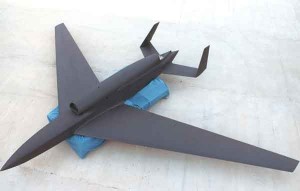
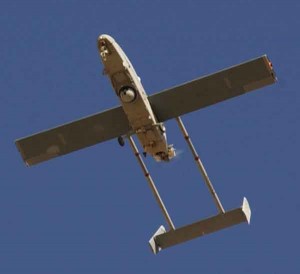
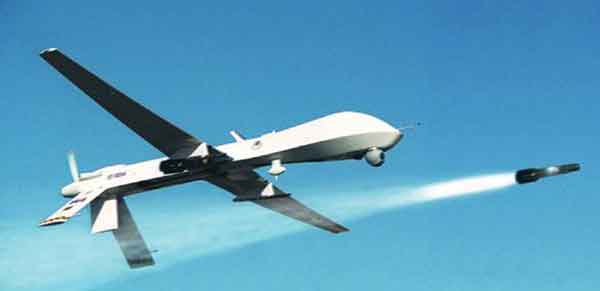
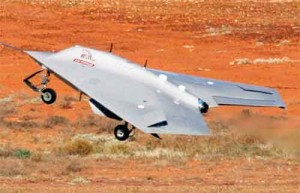
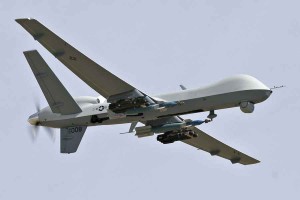

We need cmbat Drones or UAV as soon as possible.